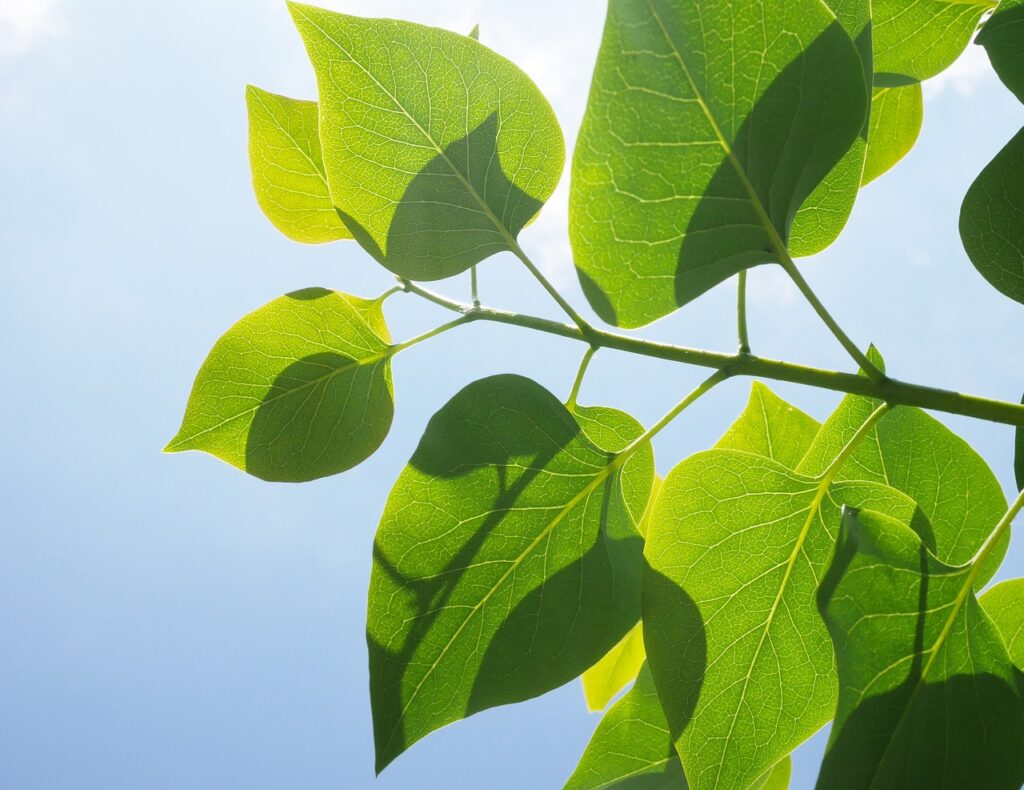Lesson : Transport, storage and gas exchange
Plants make their own food in the process of photosynthesis. Organisms that own food are said to be autotrophic. Metabolism refers to all the reactions in an organism such as photosynthesis, respiration, and reactions that occur in other processes such as cell division, growth and reproduction. To allow these processes to occur, plants need to be able to acquire and transport water, carbon dioxide, oxygen and certain minerals.
I- Draw water from the roots
Root hairs are found near the tip of small roots. Root hairs are extensions epidermis cells. They present the following adaptation to ease the absorption of water: Thin walls not covered by a cuticle in large numbers to provide a large surface area. Soil particles are enclosed by a layer of relatively pure water called capillary water. The cytoplasm of root hairs is more concentrated in solutes than the water in the soil. As a result, water enters the cytoplasm of the root hair by osmosis.

II- Upward water flow
Water diffuses from the root hair cells into cells in the root. It continues to diffuse across ground tissue until it reaches the xylem. Xylem vessels form a continuous hollow pipeline from the roots to all parts of the plant.
There are two mechanisms that combine to cause the movement of water from the roots to the upper parts of a plant: root pressure and transpiration.
Root pressure occurs when water is drawn into roots by osmosis, the build-up of water causes a pressure. Root pressure pushes water up through the xylem.
Most transpiration takes place through openings called stomata (singular, stoma) on the leaf. Water evaporates from the cells’ air spaces and diffuses out into the atmosphere through the stomata. When the leaf cells lose water in this way they become less swollen and less turgid. As a result, they become more concentrated than the xylem cells. This means that water passes from the xylem into the cells due to the osmotic gradient. This is called the transpiration stream.
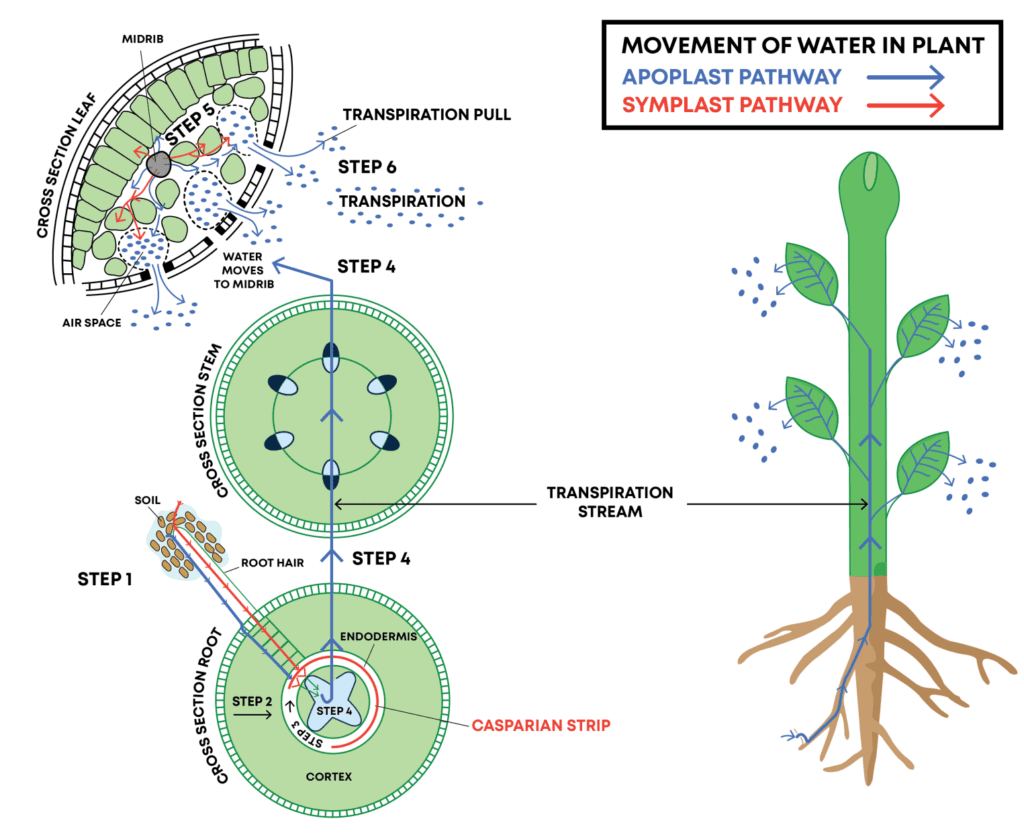
Leaves may lose more than their weight in water each day due to transpiration. If they do not replace this water they will wilt and die. To prevent wilting it is necessary for plants to reduce their rate of transpiration.
III- Taking CO2 from the air and administering it to leaf cells
They can do this in the following ways :
• Leaves have a waxy cuticle through which water cannot pass. The cuticle is normally thicker on the upper surface of the leaf because more water can evaporate from the upper surface of a leaf than from the lower surface.
• Stomata are normally located on the lower surface of a leaf. The lower surface is not in direct sunlight and so it is cooler.
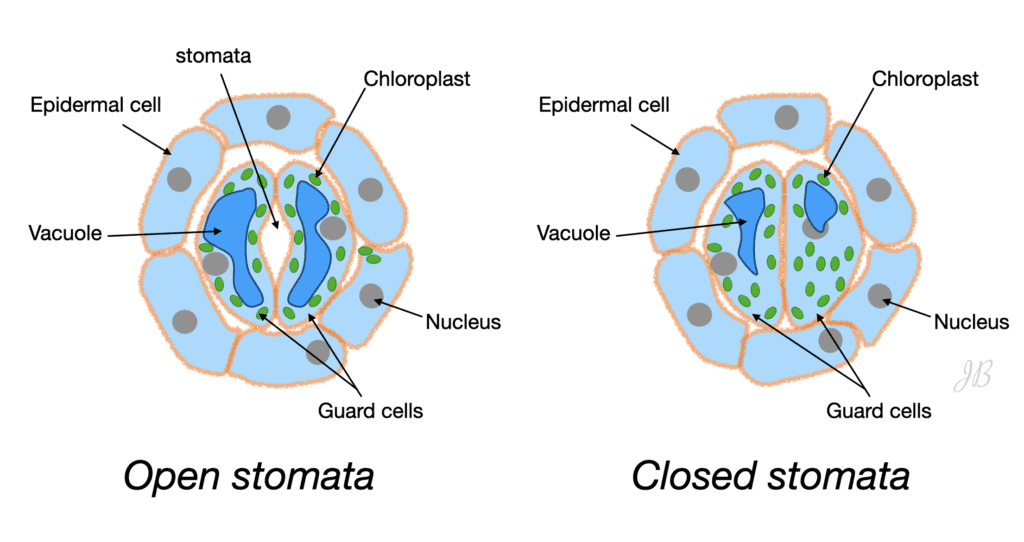
• Each stoma is surrounded by two guard cells. The guard cells can open or close the stoma by changing shape. Normally stomata are open by day. This allows the leaf to exchange gases for photosynthesis during the day. Stomata generally close at night. This helps to reduce water loss from the leaves at night, when gas exchange is not necessary because there is no photosynthesis in the dark. However, environmental conditions can cause stomata to close during the day. This happens due to the following conditions: (a) if the plant loses too much water, (b) high temperatures and (c) high wind. In these cases the rate of transpiration is too great. By closing the stomata the plant reduces water loss.
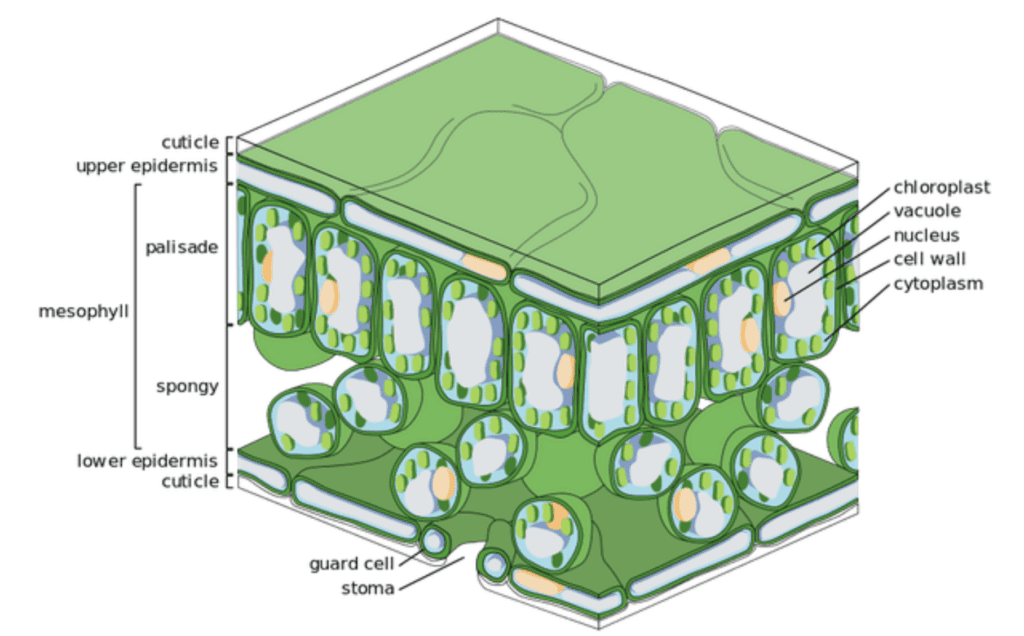
IV- Photosynthesis
Photosynthesis takes place mostly in the ground tissue of the leaf. There are two sources of carbon dioxide for photosynthesis :
• Most of the carbon dioxide comes in through the stomata from the atmosphere. This carbon dioxide diffuses into the air spaces in the leaf. From here it diffuses into the photosynthesising cells in the ground tissue of the leaf.
• Carbon dioxide is produced in leaf cells by the process of respiration. This carbon dioxide may also be used in photosynthesis.
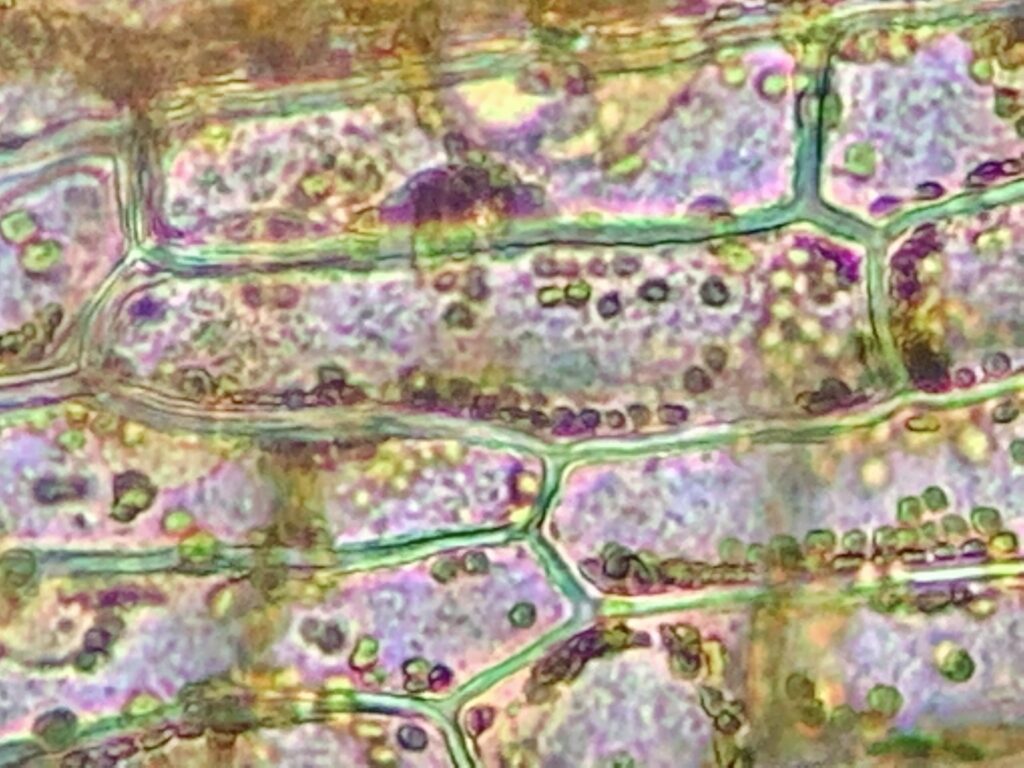
Photosynthesis is a process by which light energy from the Sun is combined with carbon dioxide gas and water to form glucose and oxygen. A green pigment called chlorophyll is needed as a catalyst for this process. In most cells chlorophyll is located in structures called chloroplasts. Photosynthesis is probably the most important process on Earth. It converts solar energy into chemical energy. The chemical energy is then used to allow other biological reactions to take place.
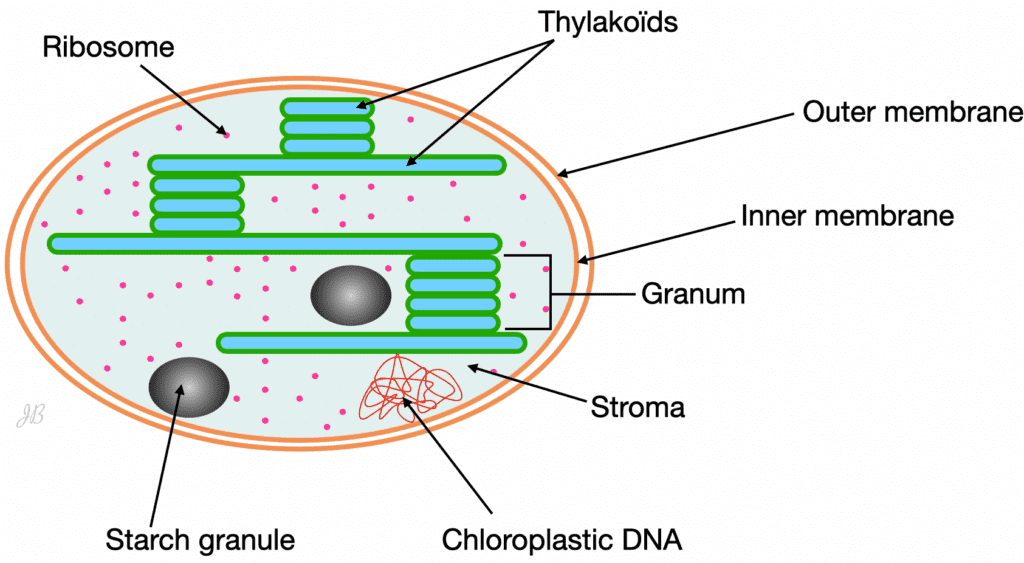

Photosynthesis occurs in two stages or phases: the light stage and the dark stage. Both of these stages take place in the chloroplast. The light stage requires light and can take place only in the light. The dark stage does not require light and can take place in light or dark. However, the dark stage uses molecules that are made in the light stage. This means that the dark stage requires the light stage to have taken place.
A- The light stage :
During the light-dependent stage (“light” reactions), chlorophyll absorbs light energy, which excites some electrons in the pigment molecules to higher energy levels; these leave the chlorophyll and pass along a series of molecules, generating formation of NADPH (an enzyme) and high-energy ATP molecules.
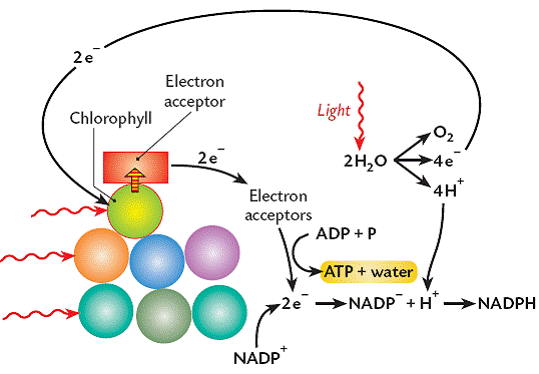
B- The dark stage :
The dark stage does not need light, but it does need NADPH and ATP from the light stage. The dark phase consists of the transformation of carbon dioxyde into glucose and other carbohydrates through the use of the chemical energy from the products of photophosphorylation. This energy, stored in the form of ATP and NADPH, is used to reduce carbon dioxyde to organic carbon.
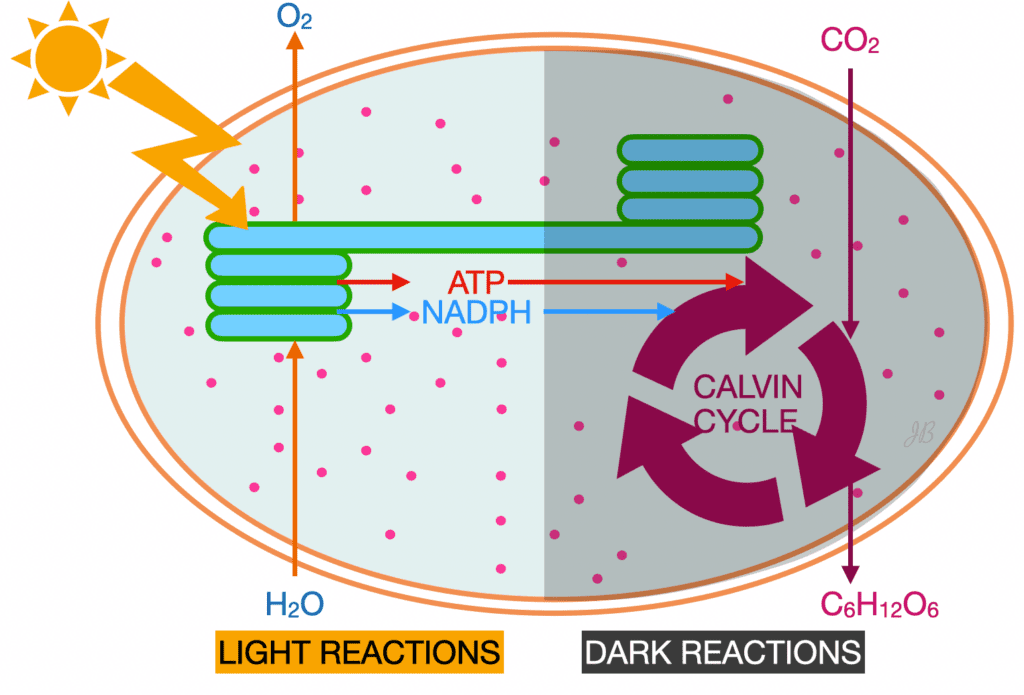
The four end products of the dark stage are: glucose, ADP, phosphate and NADP+ .
V- The fate of the products of photosynthesis
A- The products of photosynthesis
The leaf is the main photosynthetic organ in a flowering plant. Photosynthesis takes place in the chlorophyll-containing cells of the leaf. Chlorophyll is contained in chloroplasts, and these are mostly located in the ground tissue (mesophyll) of the leaf. the products of photosynthesis are oxygen and glucose.
Oxygen produced in photosynthesis can diffuse into the air spaces of the leaf and then diffuse out through the stomata into the atmosphere. Some of the oxygen formed in photosynthesis can also be used in leaf cells for respiration.
Glucose is the main carbohydrate produced in photosynthesis. Glucose may be converted to starch for storage. Some may be converted to another carbohydrate called sucrose (table sugar). Sucrose enters phloem sieve tube cells in the leaf and is then transported throughout the plant. The solution of sugary water carried in phloem is called phloem sap. Phloem carries sucrose to all parts of the plant.

B- food storage organs
Plants can alter or modify their roots, stems and leaves to act as food storage organs.
Modified root : Some dicots produce a large, V-shaped root that penetrates deep down into the soil. This tap root serves to anchor the plant and to absorb water deeper in the soil. In plants such as carrots, turnips and sugar beet, the tap root becomes swollen and fleshy with stored nutrient.
Modified stem : Some plants (e.g. potato) produce an underground stem system. The tips of some of these underground stems become swollen with stored starch. These swollen tips are called stem tubers.

Modified leaves : A bulb (e.g. onion, tulipe) contains an underground stem that is reduced in size. Swollen fleshy leaves, which are modified to store food, are attached to this stem. The fleshy leaves surround a central apical bud. A number of lateral or axillary buds are located where the leaves meet the reduced stem. The entire bulb is protected by old, dry, scaly leaves on the outside.
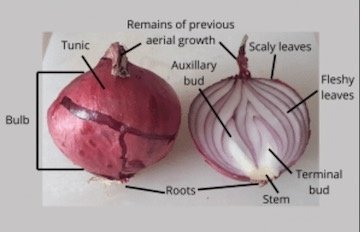
Various other modified organs exists such as leaf petioles that are modified to store food (e.g. rhubarbe).
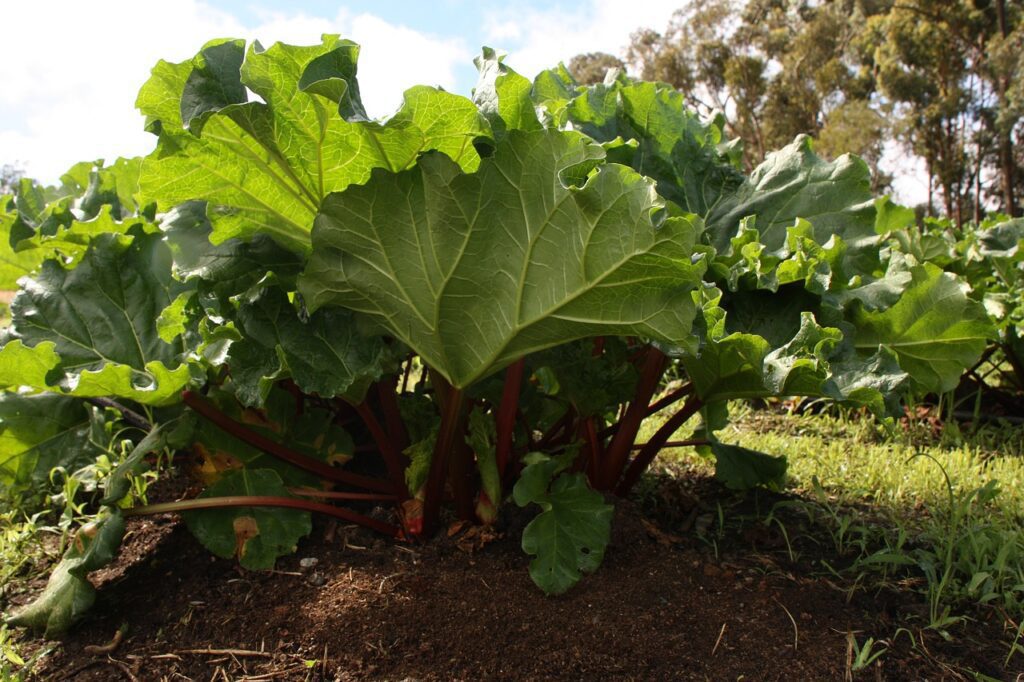
Vocabulary:

